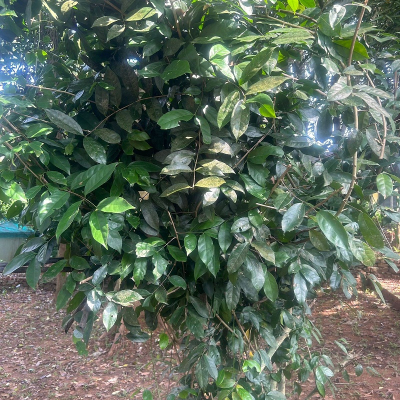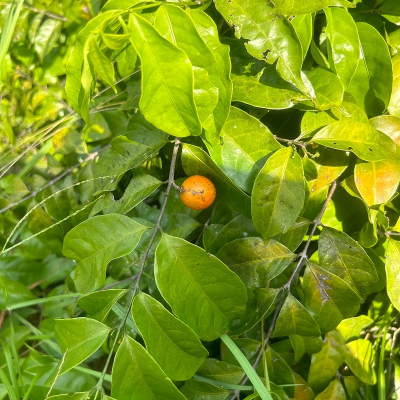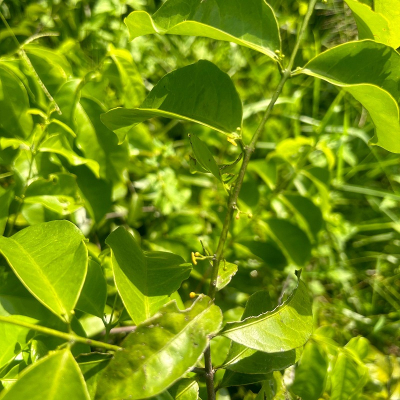Botany: A large woody climber, much dichotomously branched, bark pale yellow, young parts glabrous.
- Leaves: 6.3-11 cm, oval, narrowed at base, simple, opposite, extipulate, coriaceous, crenate-serrate, glabrous and shining, petiole 6 mm.
- Flowers : 6 mm, on short glabrous pedicels, 2-10 together fascicled on woody axillary tubercles. Calyx scarcely lobed, glabrous; petals oblong, obtuse, spreading. Fruit 2-3.8 cm, smooth, bright pinkish orange, pericarp soft-leathery, with 1-4 seeds immersed in pulp.
- Seeds : 2.5 cm, almond like, testa membranous, yellowish, embryo homogenous
Properties & Uses: The roots are acrid, bitter, thermogenic, urinary, antidiabetic, astringent, liver tonic and stomachic. Used in splenalgia, gastropathy, seminal weakness, constipation, asthma, bronchitis, cough, scurvy, verminosis, painful tumors and all types of poisons
Propagation: Seeds







